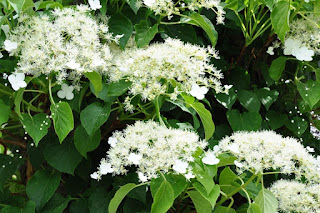Searching for plants that grow in full shade is a job filled with challenges. The challenges begin with the definitions of sunlight requirements, so the relevant terms need to be discussed first, starting with the definition of full shade.
The term full shade does not mean no sun. For horticultural purposes, a location is considered to be in full shade if it receives less than three hours of direct sun daily and receives filtered sun the rest of the day. Preferably, the hours of direct sun occur in the cooler hours of the morning with filtered protection from intense sun in the late afternoon.
A distinction should also be made between the terms surviving and thriving. Many plants can survive in full shade, but that is not sufficient for the purposes of most gardeners. Ornamental gardens are meant to beautify a property, and a plant that underperforms (for example, by not flowering as much as it should) is not helping the garden live up to this goal. A plant that is merely surviving is taking up space that is better occupied by a plant that will perform at its best in full shade. Therefore, the best examples of full shade plants cannot just survive in low-light conditions but rather thrive in them.
Shrubs
You might easily overlook shrubs when planning a shade garden (many gardeners gravitate toward annual and perennial flowering plants). But do not forget about shrubs, they provide structure and background for that planting bed you are so eager to fill with the smaller, more showy plants that tend to jump out at you at the garden center. The following shrubs are evergreens grown for their foliage and they can add great value to a shade garden.
Examples :
Mountain Laurel (Kalmia latifolia)
Japanese Rose (Kerria japonica)
Climbing Hydrangea (Hydrangea anomala subsp. petiolaris)
Perennials
Perennial plants, particularly those that flower can make up for the color variety and dramatic seasonal display that your evergreen shrubs can't provide. The following plants can tolerate full to partial shade
Examples :
Common bleeding hearts
Fringed bleeding hearts
Dutchman's breeches
Annuals
Supplement the flowers provided by your perennials with well-placed, flowering annual plants. Keep in mind that many of the plants grown by gardeners in northern regions as annuals are actually perennials in warmer parts of the world where they originated (in most cases, the tropics). These plants are too tender to survive in cold-winter climates. This is a case where usage trumps botany. These plants are termed annuals not because of their life cycle but because that is how they are used in gardens in colder climates.
Examples :
Wax begonia
Coleus
Fuchsia
Ground Covers
Ground cover plants for full shade are especially useful when you need to cover large swaths of shaded land if you don't want to use perennials or re-plant annuals every year to serve as bedding plants. Here are a few examples of ground covers that tolerate full shade
Examples:
Spotted deadnettle
Creeping myrtle
Cast iron plant
Vines
Options for shade-tolerant vines are somewhat limited, particularly if you are in search of a flowering vine that is hardy in a cold-winter climate. Boston ivy is grown for its foliage, not its flowers. Unhappily, that foliage is not as colorful in fall if it is grown in full shade. But the vibrant green foliage it provides in summer adds elegance to a shady nook. Meanwhile, climbing hydrangea does flower nicely even when grown in full shade, making it the favorite vine for gardeners in the cold climates.
Examples:
Climbing hydrangea
Boston ivy












.jpg)



